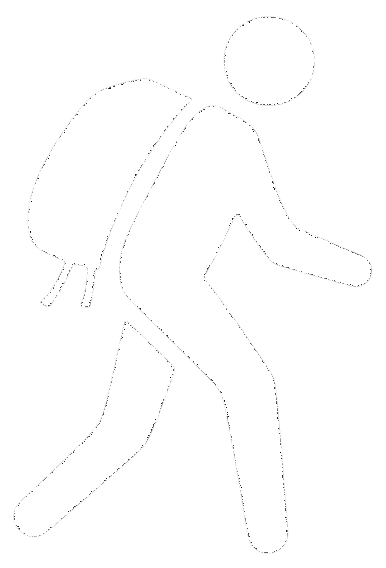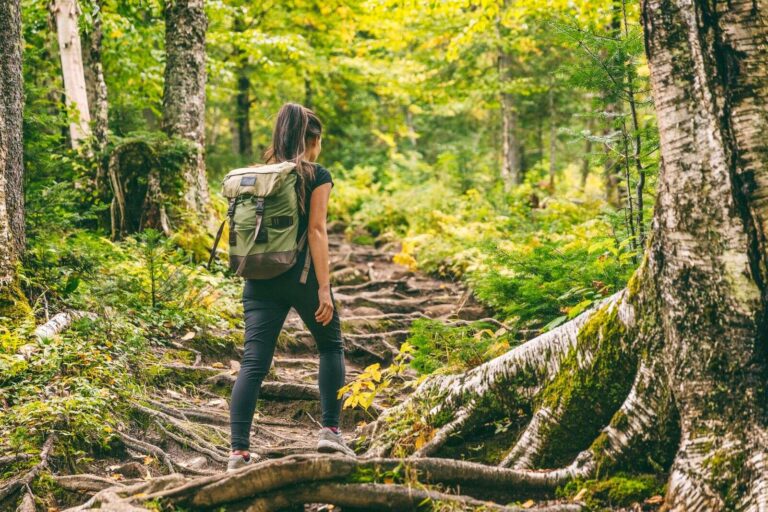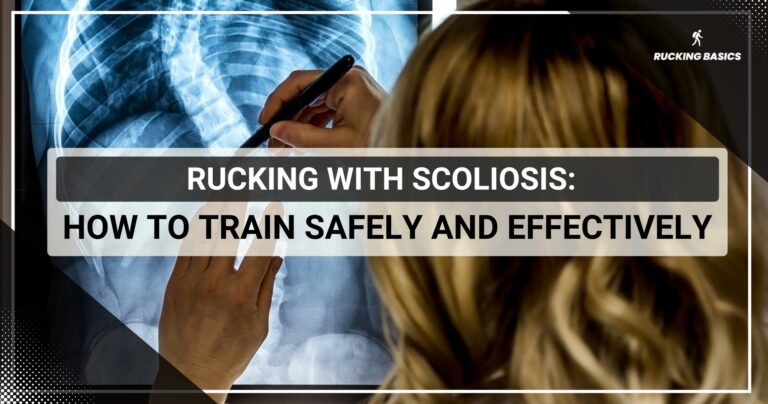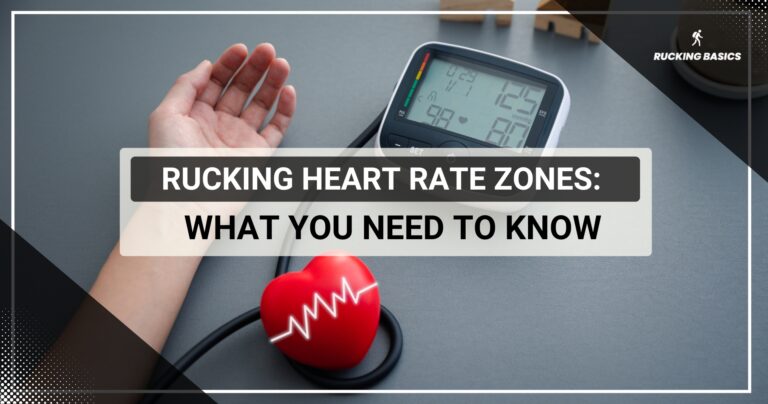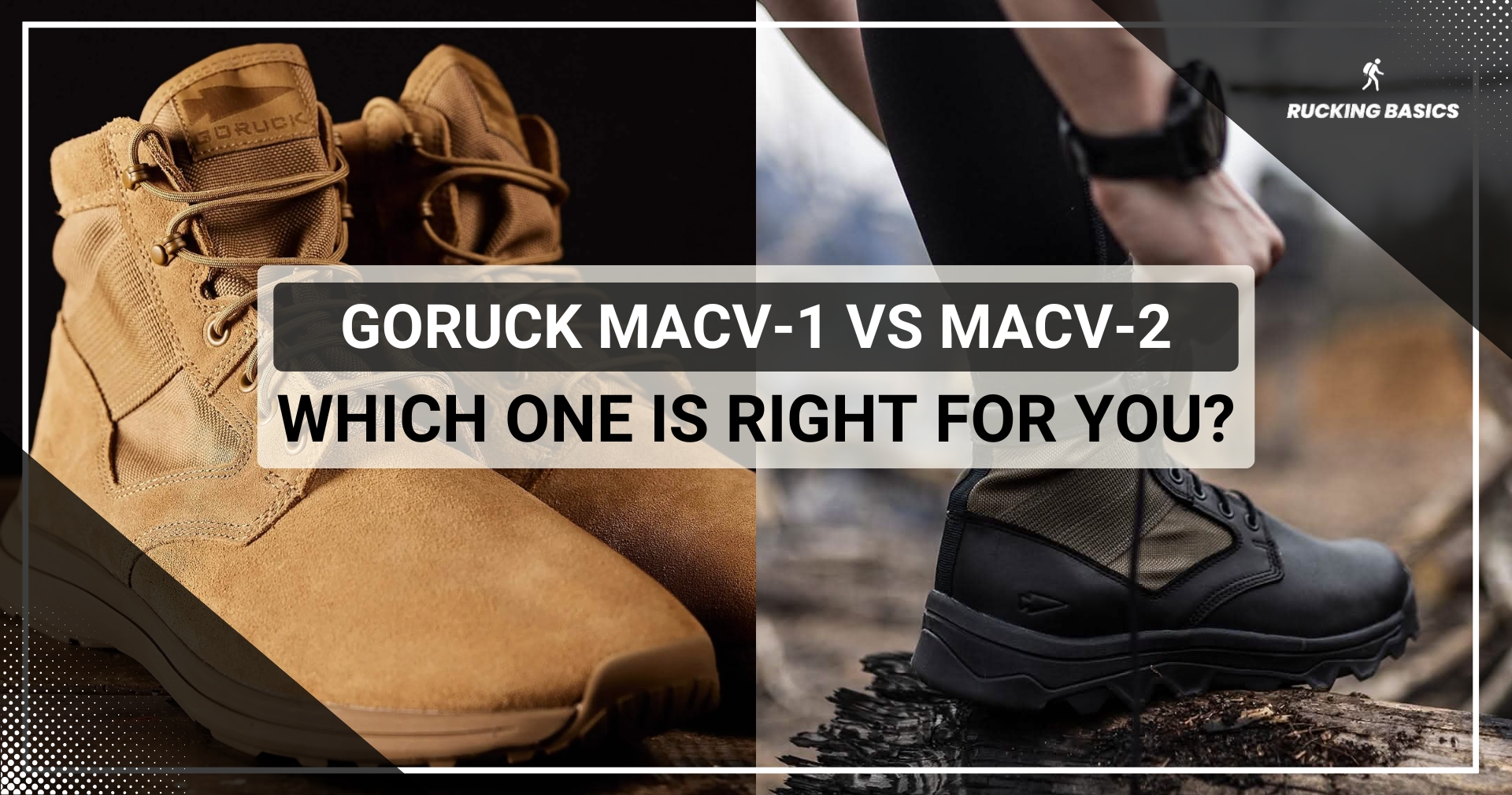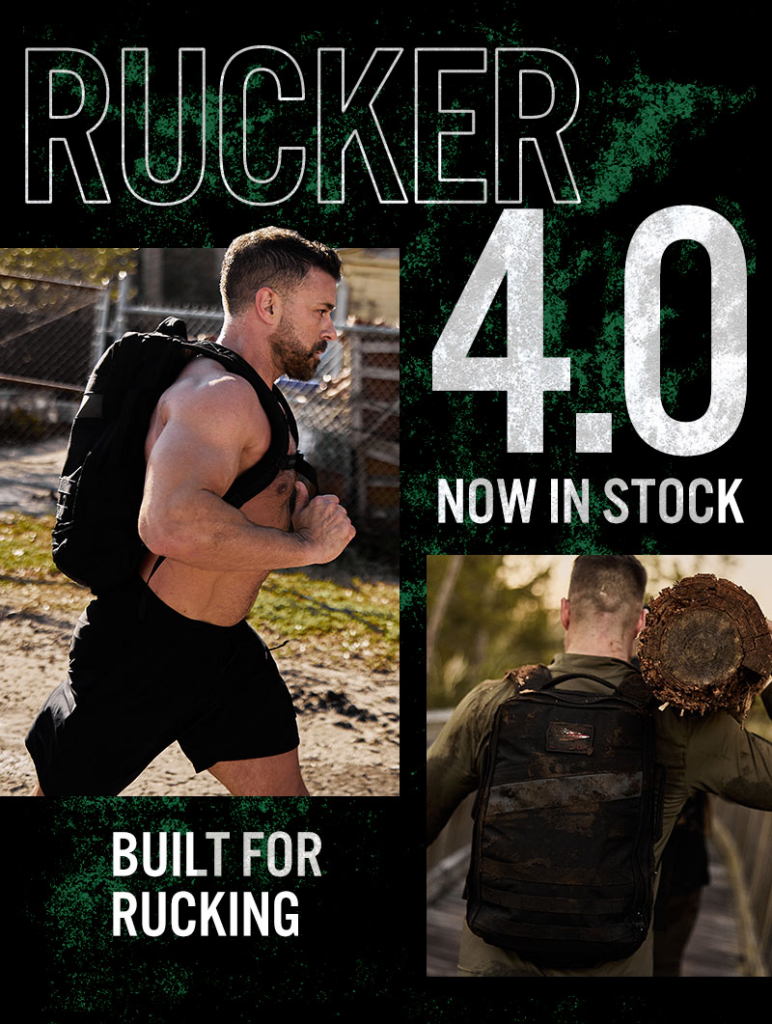Rucking, which is many people’s favorite outdoor activity, offers a plethora of physical benefits beyond just getting from point A to point B. However, in this article we are going to focus my favorite part – anatomy and biomechanics.
Rucking is a full-body workout, meaning that it engages numerous muscles throughout the body. But “full-body” is somewhat vague leaving us to ask “What muscles are involved, and how are they activated during rucking?” Let me explain in this comprehensive guide. I’m about to delve into the specific muscles worked and at what intensity they are engaged in during the act of rucking.
Lower Body Muscles
Rucking is primarily an activity for lower body muscle development, as these are the ones that contract; thus, let’s start with the rucking muscles worked from the hips down.
Quadriceps
The quadriceps is not one muscle but a group of four muscles on the front of the thigh . It is comprised of the rectus femoris, vastus lateralis, vastus medialis, and vastus intermedius. All those muscles are pivotal in everyday movements, gym workouts, and rucking.
These muscles are heavily engaged during both uphill and downhill terrain. During uphill ascents, they contract to extend the knee joint, propelling the body upwards, while during downhill descents, the quadriceps act as stabilizers. At that moment, an eccentric contraction occurs to control the descent and prevent excessive knee strain. That’s why I keep telling my clients that they have to think about the eccentric part of the exercise, not just the concentric part.
Furthermore, the quadriceps help you maintain balance and stability of the entire lower body as well.
Hamstrings
The hamstrings — biceps femoris, semitendinosus, and semimembranosus — are located on the back of the thigh and are thus they are the antagonists to quadriceps muscles.
These muscles maintain stability and propel forward movement. The hamstrings dynamically contract to bend the knee and extend the hip, facilitating a fluid and efficient step.
Beyond their primary function of knee flexion and hip extension, the hamstrings also contribute significantly to decelerating the leg during downhill descents, preventing hyperextension, and ensuring controlled movement. Often, ACL tears are caused due to hamstring weakness and the inability to decelerate properly. (1)
On top of that, hamstrings maintain pelvic alignment and prevent excessive stress on the lower back, especially when carrying a loaded backpack.
Strengthening your hamstrings is crucial. But incorporating rucking into your routine can also engage your core muscles. To better understand how to target your midsection, check out this helpful guide on building rucking abs. It provides tips for improving core strength and overall stability during rucking.
Exercises such as deadlifts certainly strengthen hamstrings, but you have to train them in other ways, too, like doing sprints and Nordic hamstring curls.
Strengthening your hamstrings is crucial, and if you’re curious about how rucking impacts muscle growth, check out this guide on how rucking builds muscle—it explains how rucking works different muscles throughout the body.
Glutes
Does rucking build glutes? yes, but they are not just there for looks people. The gluteus maximus, medius, and minimus are actually powerhouse muscles involved in hip extension, external rotation, and abduction during rucking. The strength of the glutes is crucial for the whole body because they practically “connect” the upper and lower parts of the body while supporting the spine.
In the context of rucking muscles worked, the glutes act as primary drivers of forward propulsion, particularly during uphill ascents where the body must overcome gravity’s resistance. The gluteus maximus, the largest muscle in the body, forcefully extends the hip joint, driving the body upward and forward with each step. The gluteus medius and minimus work simultaneously to contribute to hip abduction and stabilization.
Calves
The gastrocnemius and soleus make the calf and are necessary for any sports activity, including rucking and even regular walking. Trust me, I know because I had a grade 2 tear of gastrocnemius a few years ago.
They are indispensable to the mechanics of rucking. Positioned at the back of the lower leg, these muscles plantarflex the ankle, which is a movement that generates propulsion and maintains stability both during uphill climbs and downhill descents.
If you wish how to build rucking calves, it’s crucial to train them concentrically and eccentrically, plus to include plyometrics and isometrics in your training. That’s the only way you can bulletproof your calves. And don’t neglect the soleus. It’s one of the most significant muscles in the body, and many people don’t even know it exists. (2)

Core Muscles
My fellow ruckers often forget that the core muscles are engaged almost as much as the lower body muscles.
Rectus Abdominis
If you’ve never heard of the rectus abdominis, they’re the “six-pack” muscles.
They stabilize your torso during rucking and other activities. Positioned along the front of the abdomen, these muscles engage dynamically to support the spine and pelvis. Without them, maintaining proper posture and alignment would be impossible.
In most cases, the rectus abdominis contracts isometrically to prevent excessive movement or swaying. This is particularly important for rucking because you are carrying a loaded backpack. Strong “six-packs” significantly reduce the risk of lower back strain and injury.
But that’s not all. The rectus abdominis transmits forces between the upper and lower body during rucking.
Obliques
The oblique muscles are located on the sides of the abdomen. They are less visible than a six-pack, and you have to have a very low body fat percentage for them to be visible. But whether they are visible or not, it doesn’t matter – they are still there and assist in rotation and balance during rucking.
The oblique muscles must contract concentrically and eccentrically to control rotational movements of the torso. This contributes to overall core stability, which is the key to distributing the load evenly and reducing the risk of injury or discomfort.
Exercises for the obliques, such as Copenhagen side plank and med ball throws, are always part of my functional workout.
Erector Spinae
The erector spinae muscles, as the name suggests, run along the spine.
The support they provide to the spine during load-bearing activities like rucking is indispensable. As the primary extensors of the spine, these muscles engage dynamically to resist the forces of gravity and maintain proper alignment of the vertebral column. Weak muscles can cause back pain and many other problems.
Since the erector spinae muscles undergo continuous engagement during rucking, you can feel fatigue in your back after you take off your backpack.
Strengthening the erector spinae muscles through targeted exercises and proper conditioning can further enhance their ability to support the spine and pelvis during rucking. My advice is to do bird dog, deadlift, bent-over row, good morning, hyperextension, and other similar exercises.
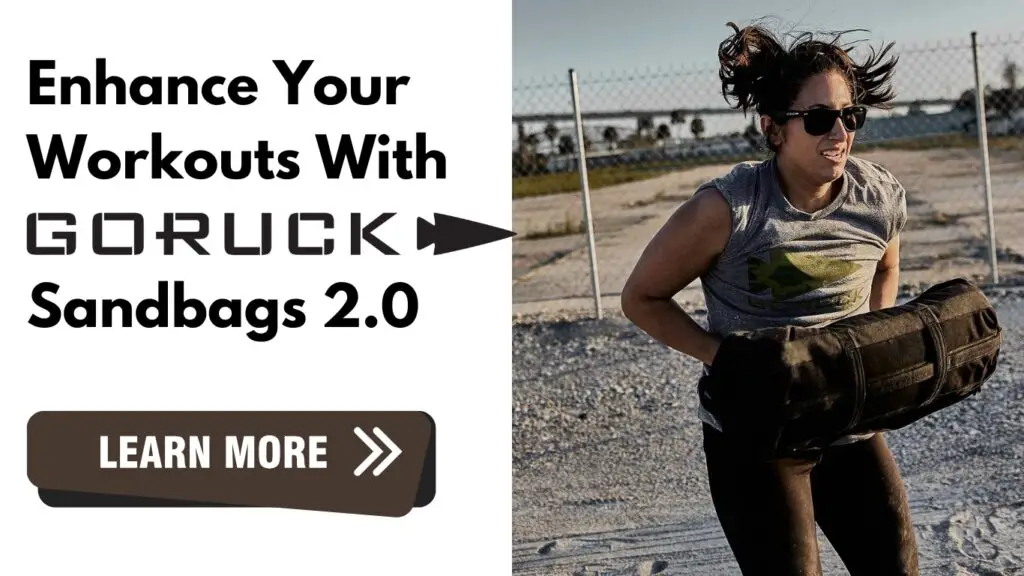
Upper Body Muscles
If we consider that the chest, upper back, and arms are upper body muscles, then rucking is clearly not an activity that puts them in focus. However, they are still engaged and thus worth mentioning.
Deltoids
The deltoid muscles have the anterior, lateral, and posterior heads. These are actually your shoulders, that is, the shoulder muscles.
Rucking is not a prime exercise for the shoulders, but since these muscles are positioned around the shoulder joint, they coordinate the swinging motion of the arms with each stride. Since there will be many strides in every ruck marching and keeping the same rhythm is essential, the deltoids also play a role in the whole rucking endeavor.
Moreover, the deltoid muscles prevent excessive strain or fatigue of the shoulders during prolonged rucking sessions. So, the next time you think of skipping a shoulder workout, remember that they also contribute to biomechanical efficiency during rucking.
Trapezius
The trapezius muscles occupy a significant part of your upper back and neck.
They are the most important muscles in that part for rucking because they provide anchors for the backpack, distributing its weight evenly and minimizing strain on the shoulders and neck.
Moreover, the trapezius muscles act together with other shoulder stabilizers to ensure your shoulders are safe. By providing a sturdy foundation for the load, these muscles help prevent excessive sway or shifting.
Strong trapezius muscles contribute to overall posture and spinal alignment, preventing slouching or rounding of the shoulders, particularly when carrying a loaded backpack. You don’t have to have traps like Ronnie Coleman but don’t forget to do a few exercises for this body part. (3)
Biceps and Triceps
I thought about whether to mention the biceps and triceps at all, but even though they are not the most important for rucking, they still play a role.
Despite not being the primary muscles engaged in the activity, they support movement and stability during rucking. These muscles act as synergists, assisting the deltoids and other upper-body muscles.
The role of biceps and triceps in arm deceleration is often neglected, and only the aesthetic nature of these two key arm muscles is discussed.
Additional Muscular Engagement
I must highlight a few more lesser-known muscle groups that don’t fall under any of the categories above. If they are weak, they can compromise rucking.
Hip Flexors
Although the hip flexors have got the attention they deserve in recent years, they are still often neglected in workouts.
They significantly control leg movement and optimize stride length. Located around the hip joint, these muscles engage to generate power. Many ruckers do not use them enough, which leads to erratic steps and injuries.
Although some coaches believe you will strengthen the hip flexors enough by doing other exercises, such as squats, I like doing at least one isolation exercise for the hip flexors per leg day.
Ankle Stabilizers
Strong ankle stabilizers are essential for walking on uneven terrain during rucking. This group of muscles, tendons, and ligaments around the ankle joint helps you balance and absorb shock.
They also contribute to proprioception, the body’s awareness of its position in space. Therefore, try to strengthen ankle stabilizers as much as possible and avoid useless tools like the Bosu ball, which can even weaken them, similar to the workout in sand. This muscle group will not be strong enough if you only use body weight. Add resistance training in your training plan.
Wrapping Up
I hope I explained everything clearly to you and that you still find it interesting to read because I know that you certainly did not come for an anatomy textbook.
By understanding the specific rucking muscles used throughout the activity, you can maximize muscle growth, reap all the benefits of this rewarding activity and enhance your overall fitness level.
Keep conquering new trails and enjoy rucking – hope to see you soon at a GoRuck challenge.
Frequently Asked Questions
How does rucking compare to running in terms of calorie burn?
Rucking workout burns fewer calories compared to running and strength training. It comes as no shock since we’re aware of the substantial contrast in intensity between these two activities. However, the exact calorie burn depends on factors such as distance, terrain, and the weight of the backpack. Running , as aerobic exercise, generally burns more calories in a shorter time frame, but if you ruck uphill with 40lbs on your back, then rucking will significantly contribute to overall energy expenditure and weight loss.
Can rucking help improve posture and spinal alignment?
In general, yes, rucking can help improve posture and spinal alignment by helping you build muscle mass. Carrying a weighted backpack requires balance and stability. Over time, it will strengthen the muscles supporting the spine, leading to better posture and a reduced risk of back pain. But we must be aware that carrying weight on the back can also negatively affect posture if you are not strong enough for the weight you want to carry.
How does rucking impact joint health compared to running?
Rucking typically imposes less stress on the joints than running, especially on hard surfaces like pavement. The slower pace and lower impact nature of rucking reduce the risk of joint injuries, so it is much better if you have arthritis or some other joint problem than running.
Is rucking suitable for individuals with lower back pain?
It depends on the cause of low back pain. In most cases, it can help because it is a low-impact activity that strengthens the back. Nevertheless, be careful if you have spinal discs or vertebrae problems. Anyway, you should start gradually, listen to your body, and consult your doctor.
How does rucking affect muscle recovery compared to running?
Rucking is less demanding than running and, therefore, better for muscle recovery. Its gentle nature can reduce muscle soreness and fatigue, allowing quicker recovery between sessions, especially if you like active recovery. That does not mean rucking is easy, so practice proper post-ruck recovery as well. There should be days when you rest completely, even without active recovery.
References
- Myer GD, Ford KR, Barber Foss KD, Liu C, Nick TG, Hewett TE. The relationship of hamstrings and quadriceps strength to anterior cruciate ligament injury in female athletes. Clin J Sport Med. 2009 Jan;19(1):3-8. doi: 10.1097/JSM.0b013e318190bddb. PMID: 19124976; PMCID: PMC9928500.
- Bohm S, Mersmann F, Santuz A, Arampatzis A. Enthalpy efficiency of the soleus muscle contributes to improvements in running economy. Proc Biol Sci. 2021 Jan 27;288(1943):20202784. doi: 10.1098/rspb.2020.2784. Epub 2021 Jan 27. PMID: 33499791; PMCID: PMC7893283.
- Ueda Y, Nakamata O, Kakizaki F, Natsuyama Y, Kawata S, Yakura T, Li ZL, Qu N, Itoh M. Relationship between scapular elevation exercises with different alignments and activity of the trapezius and levator scapulae muscles. J Phys Ther Sci. 2023 Nov;35(11):751-756. doi: 10.1589/jpts.35.751. Epub 2023 Nov 1. PMID: 37915451; PMCID: PMC10618018.
